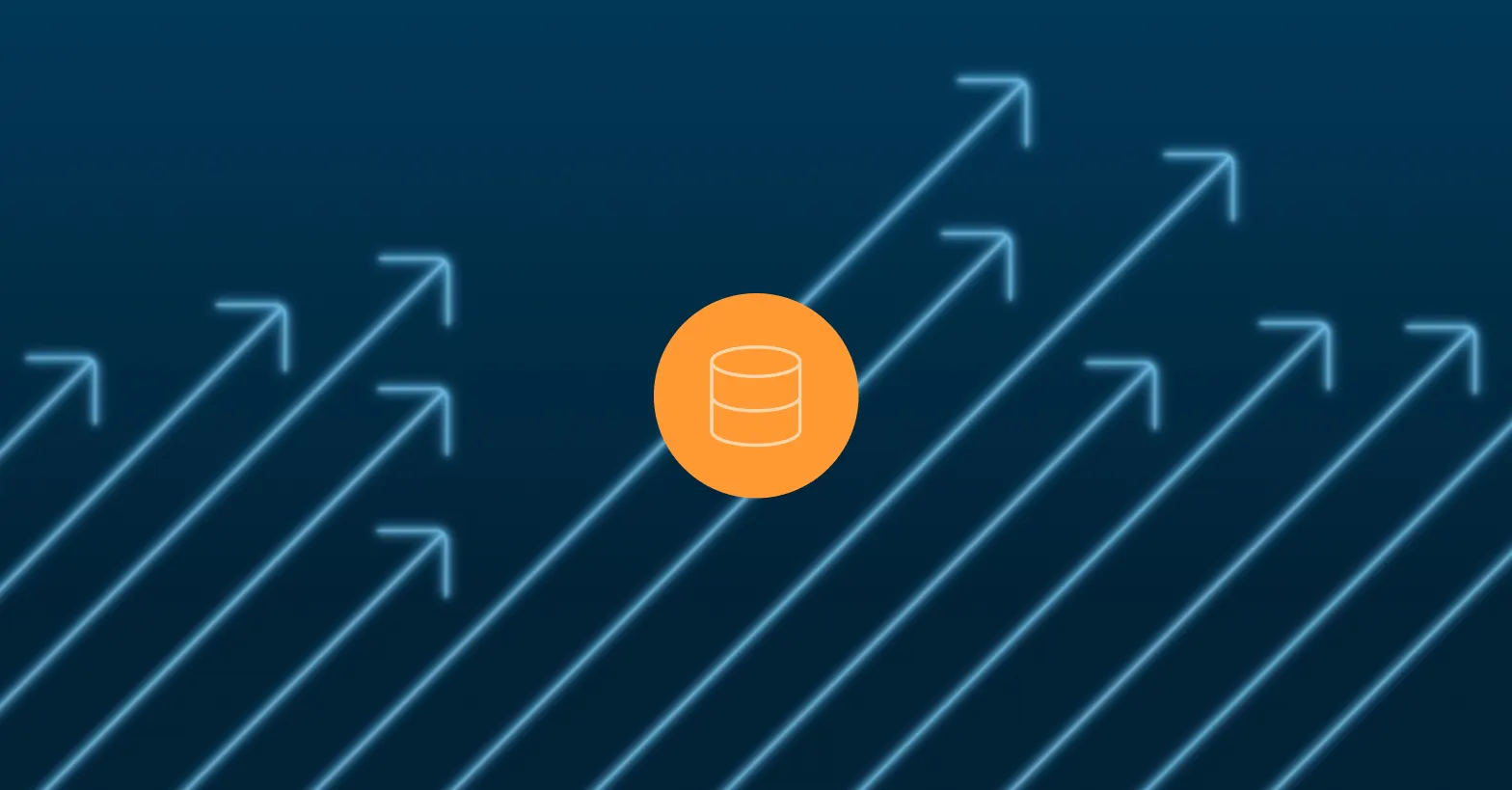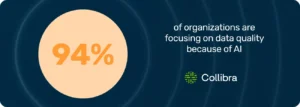Data catalog benefits: Why your enterprise needs a data catalog and where to start

20 03
2025

20 03
2025
Data is a strategic asset for any business. At Murdio, we know that all to well, helping enterprises across the world govern and manage their data. But you don’t really have to be a data governance expert to know that data can benefit the business only when it’s accessible, well-understood, and trusted.
With the growing number of sources enterprise data comes from these days, it might be challenging to make that happen, and many companies still sit on data they can’t effectively use. That’s what a data catalog is for – and here’s why your enterprise needs one. In this article you will find a comprehensive data catalog benefits list so read on.
Organizations are overwhelmed by the sheer amount of data generated internally and externally. Data is often stored in silos: across cloud systems, data lakes, warehouses, and traditional databases. Over the years, we’ve seen all kinds of enterprise data setups. Plus, there’s AI that adds an additional layer of complexity. All of this makes it difficult to locate and trust data.
A data catalog acts as a single, unified repository of metadata to provide detailed context about each data asset, including (but not limited to) data lineage, quality metrics, security classifications, governance, and ownership details. It’s where we’ll start if a company has scattered data or – which also happens – has multiple data catalogs, which still call for a single unified catalog to organize them.
Without a centralized system, employees waste time searching through multiple unconnected systems for the correct data, which obviously impacts their productivity – and the entire organization’s efficiency.
A data catalog consolidates all this information into one intuitive interface. This saves time and reduces errors when teams use outdated or inconsistent data across reports and other materials.
(If you’ve ever tried to track down a piece of data from a sales report, but nobody in the entire company remembered where it actually came from, you’ll know what we mean.)
Democratizing data access is one of the phrases you hear a lot lately when it comes to data governance. But it’s more than just a buzzword.
To allow non-technical users to locate, understand, and use data for their own analytics and reports, you need a comprehensive data catalog. At least when you want to limit the reliance on IT or data engineering teams, who traditionally have access to data within large enterprises.
In this scenario, a data catalog benefits everyone – the employees, who can freely access the data and be sure they’re reliable and trackable, and the IT and data teams, who gain more time by not being the providers of data for all teams and departments.
Data catalogs play an essential role in data governance because they make metadata – information about data – current, well-maintained, and easily accessible. Companies with data catalogs in place can track data lineage, verify data quality, and enforce access controls. We can implement all sorts of tools and integrations that make the data even more helpful in specific scenarios.
In sectors with rigorous regulations, such as healthcare and finance, a data catalog is really a necessity.

According to Collibra, 94% of organizations are focusing on data quality because of AI. That’s because AI models are only as good as the data they’re trained on. If your data is incomplete, inconsistent, or inaccurate, your AI outcomes will be flawed. And they might lead to poor business decisions, biased predictions, and unreliable automation.
A well-maintained catalog reduces time wasted on collecting and validating data, so AI models can be developed faster and more efficiently. Plus, reliable data helps eliminate bias in AI models and improves lineage tracking, making it much easier to validate AI-driven outcomes.
In general, a data catalog is the starting point for effective data management and data-driven business performance. But let’s get into specifics. Here is our list of top 11 data catalog benefits we think you should be aware of.
From our experience working with clients, it can take up to 65% of a data scientist’s time to find relevant data. And industry reports cite from 20% up to even 30% of time spent on searching for information for knowledge workers.
Plus, when non-technical users finally locate the data, they often don’t understand how to use it. Imagine wasting an entire day in a workweek (or more) – because that’s what it really amounts to.
A data catalog centralizes information about all data assets, making it far easier for people in your company to find what they need. With advanced search capabilities that support keywords, tags, and natural language queries, employees can quickly locate relevant datasets and spend less time on manual searches.
A centralized inventory radically reduces the risk of duplicate data and redundant efforts (like, for example, buying the same report by different divisions). And if you connect a data catalog to a data glossary, teams also get a clear business context for the data, so they understand it and know how to use it.
By maintaining rich metadata, including data definitions, quality metrics, and data lineage, a data catalog helps everyone in the company use the same standardized “language” when referring to data. In consequence, identifying inconsistencies, enforcing validation rules, and enabling continuous data quality assessments is much easier.
According to Collibra, organizations using data catalogs typically notice a significant improvement in data accuracy and reliability.
If you want to be compliant with regulatory requirements such as GDPR, HIPAA, and CCPA, your company needs to demonstrate strict control over data privacy and security, which is really difficult (if not impossible) without a data catalog.
Data catalogs provide a clear audit trail and a way to centralize control over data access and usage. They also integrate with access control mechanisms so that sensitive data is only accessible to authorized personnel.
Tracking data lineage and audit changes makes it far easier to comply with standards and prepare for regulatory audits.
An interesting example is one of our clients, a leading Swiss private bank. The company needed to comply with FINMA Circular 2023/01, which mandated stricter governance and cataloging of sensitive critical data elements (so called SCDEs). With over 100 applications containing SCDEs and an unused Collibra instance coupled with a complex stakeholder alignment, let’s say there were plenty of things to work on for our technical implementation team.
Of course, we started with a centralized data catalog and a structured data governance framework, cataloging and classifying SCDEs across all the applications. As a result, the bank achieved full compliance ahead of the deadline – and you can read a more detailed case study here.
Data catalogs make it easy for non-technical users to access the data they need in an easy-to-navigate interface. When people across the company have access to trustworthy data, they can perform their analyses independently and not engage specialized data teams every time. And they can come up with more business insights that help drive better decision-making and innovation.
This is also what happened in the case of the Swiss bank mentioned in the previous section. As a result of centralizing and cataloging data, the employees were able to submit and update SCDEs directly in Collibra and eliminate manual tracking in Excel entirely.
In our experience, data catalogs, along with more features built upon them, such as data marketplaces and business glossaries, can drive a noticeable improvement in team productivity and even sales performance.
A data catalog is not just a technical tool. You can look at it as a collaborative engagement platform, letting data stewards, analysts, and other stakeholders annotate datasets, share insights, and rate data assets.
It helps create a collaborative environment around data, promote knowledge sharing, and build an organizational culture centered around data literacy. Business stakeholders who understand how to use Collibra are better aligned and more efficient.
A data catalog also reduces the “tribal knowledge” barrier and improves cross-departmental collaboration and dialogue. You might know first-hand what happens when that one person leaves the company – the one who knew where a piece of data frequently used in company materials originated. With a data catalog in place, you no longer have to worry about this kind of thing happening.
What results from efficient data discovery, reduced duplication, and automated metadata management are minimized time and resources. And these typically lead to significant cost savings.
According to data gathered by Collibra and IDC, a Collibra data catalog, along with other features such as stewardship and data lineage, can:
All while employees no longer have to spend hours searching for or cleaning up data. (Remember that 20%-30%, or even 65% of an employee’s time from earlier on in the article? That’s now replaced by a ready access to cataloged and contextualized data.)
Understanding where data comes from and how it’s been transformed is critical for troubleshooting and regulatory compliance.
Data catalogs capture detailed lineage information, supporting impact analysis when changes and transformations in the data occur upstream. This means that the data is always consistent across the company, for example, in reporting, and it’s always easy to track it back to its source. (So you don’t have to rely on that one person who might not be with the company anymore.)
When you have a centralized repository that documents data definitions, quality metrics, and lineage, you gain an authoritative “source of truth.”
This naturally helps build trust in the data across the organization and higher data adoption rates.
In other words, people trust the data and they feel encouraged to use it, also because they can easily understand it.

Dispersed and unreliable data that’s difficult to access can hinder innovation. Data catalogs enable teams to prototype ideas and experiment with new approaches muchfaster.
That same easy access that reduces the time needed to gather and validate data can also shorten the time-to-market for new products and services.
According to Collibra, the TTM for digital products can be accelerated by up to 40% thanks to cataloging data along with other Collibra features like data marketplace and data discoverability.
For example, this is how Credit Agricole gathers data around the customer to offer more personalized insurance products.
Data catalogs are really hubs for metadata, facilitating integration across different data systems.
A data catalog boosts interoperability among various applications and platforms with clear information about data formats, sources, and transformations, making it easier to consolidate data for analytics.
And this can even double the business value from analytics investments plus help with other aspects such as compliance. If you look back at the Swiss bank example, the data catalog helped manage and classify sensitive data across more than 100 applications (!)
A data catalog is also necessary if you want to migrate company data to the cloud. With a catalog in place, along with data lineage and data quality and observability tools, you can migrate data to the cloud much faster while reducing storage costs (5-35%) by eliminating old and inaccurate data.
If you’re getting ready for data migration, see this data cloud migration checklist prepared by Collibra.
If you’re still in the phase of contemplating data catalog implementation, here’s what it takes to start:
Start with an audit of your current data environment. Identify all data sources, from databases and data lakes to cloud storage and spreadsheets, to understand the types of data available, their storage locations, and how they’re organized.
Involve key stakeholders from various departments to get a comprehensive view of your data assets.
Here’s what one of our Data Governance Experts and a certified Collibra Ranger, Stanisław Radomiński, recommends: “Start small. Create a POC on a small set of data (from one department, for example) to illustrate your case and gain traction and momentum. Even a simple spreadsheet can do the trick here.”
Before selecting a tool, establish clear data governance objectives. Define the roles and responsibilities for data stewards and set policies around data quality, security, and compliance. Document policies related to data ownership, access control, and data lifecycle management.
Clear policies will guide the configuration of your data catalog. At Murdio, this is what we’ll usually start with when implementing a Collibra data catalog for our clients.
Select a data catalog solution that fits your organization’s needs. Evaluate tools based on their ability to integrate with your existing systems, ease of use, metadata management capabilities, and support for data lineage and collaboration.
We recommend Collibra, as it’s the most comprehensive data governance and engagement tool out there. And if you work with our team, we can implement custom solutions and integrations aligned with your business needs and tech setup.
The next step is integrating metadata from all identified data sources into your new catalog. This process can often be automated using connectors and crawlers provided by modern data catalog tools. The metadata should be enriched with information about data quality, lineage, and classification.
If we work together, our implementation teams can help you set it all up.
Whenever you introduce a new tool in your company – especially if it’s a critical and comprehensive tool like Collibra – focusing on user adoption is key if you want to see the results we’ve talked about.
Organize training sessions and create documentation to help users understand how to use the data catalog in their day-to-day work.
Once your data catalog is live, continuously monitor its performance and gather feedback. Use the input to make iterative improvements. As your organization grows and data sources multiply, your data catalog should scale as well to integrate new data sources and update metadata regularly.
Again, Murdio experts can help long-term in data catalog maintenance, future enhancements, and integrations with new systems as they are being introduced.
Book a call with a Murdio expert, and we’ll discuss all the specifics and guide you through the process of data catalog implementation.
A data catalog is a centralized repository that stores metadata about an organization’s data assets, enabling users to discover, understand, and use data more effectively. It includes information such as data lineage, quality metrics, and security classifications.
A data catalog is the cornerstone of data management. It provides transparency into data assets across the entire company. It makes it easier to enforce data policies, track data lineage for compliance, and have better control over who can access sensitive data.
Absolutely. Modern data catalogs are designed with user-friendly interfaces and search functionalities that let non-technical users locate and use data for their own analytics and reporting, reducing reliance on IT teams.
Key benefits include improved data discoverability, enhanced data quality, streamlined collaboration, better compliance, operational cost savings, and increased transparency through detailed data lineage.
Evaluate tools based on integration capabilities with your existing systems, ease of use, automation features for metadata ingestion, data lineage tracking, and support for collaboration. At Murdio, we suggest Collibra as the most comprehensive and scalable platform for cataloging data.
Focus on training and clear communication. Involve key stakeholders early in the process, provide ongoing support, and celebrate quick wins to promote a culture that values data accessibility and quality.
© 2025 Murdio - All Rights Reserved - made by Netwired